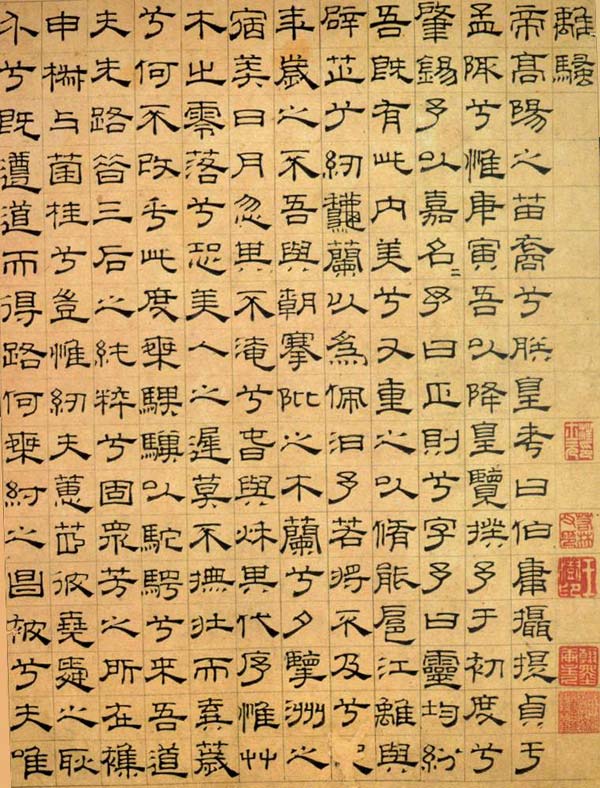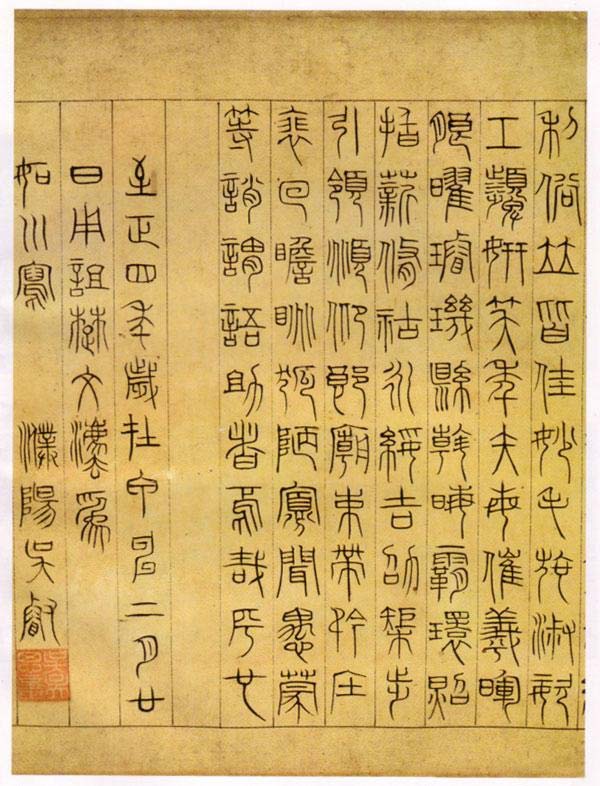Wu Rui (1298-1355), whose courtesy name was Meng Si, also known as Xuetao Sanren, Qingyunsheng, and Yangsu Chushi, was originally from Puyang and moved to Hangzhou. Lifelong commoner. In his later years, he lived in Kunshan, Jiangsu Province, and died in Kunshan, because he passed on what he learned to the Wumen area. He was a disciple of Wu Yan and was good at calligraphy, especially seal script and official script. Liu Ji's "Collection of Fuou" says: "Rui Shao loves to learn, is skilled in calligraphy, and is especially good at seal script and official script. He has studied all the ancient writing systems in the past dynasties and got the key points. The writing seems to be inadvertent at first, but the movement is correct. Those who know it say it. Wu Zixing and Zhao Wenmin cannot pass." He accepted Wu Yan's ideas in seal script, official script, and seals, and developed them. The handwritten writings handed down from ancient times include "A Thousand-Character Essay in Seal Script", "Li Sao in Official Script", "Nine Songs Picture Scroll and Postscript", etc.
Seal script collected by Shanghai Museum 28.2×223.3 27.7×240

Li Sao Volume in Official Script (Part)

Seal Script Thousand-Character Scroll (Part)
This Seal and Official Scroll is composed of Li Sao in official script and Thousand-Character Wen in seal script. It was written in the second year of Yuan Tong (1334). At that time, Wu was only 37 years old and in her prime. However, it can be seen that the writing structure is mature and stable, the layout is subtle, the structure is unique, the rules are rigorous, and every word is meticulous. It is a masterpiece that has been passed down for generations, but it is not simple enough.
Reprinted from Shanghai Museum website








